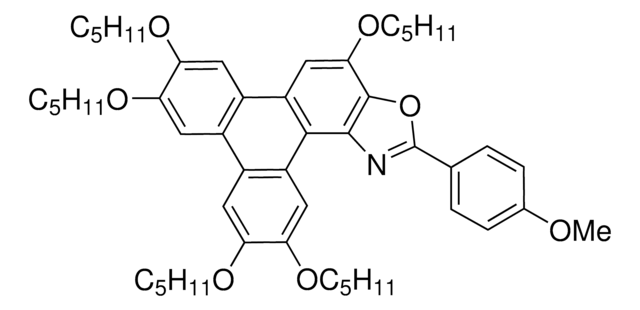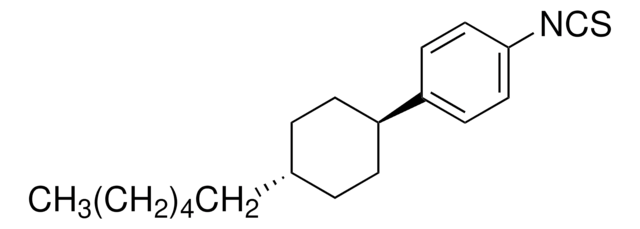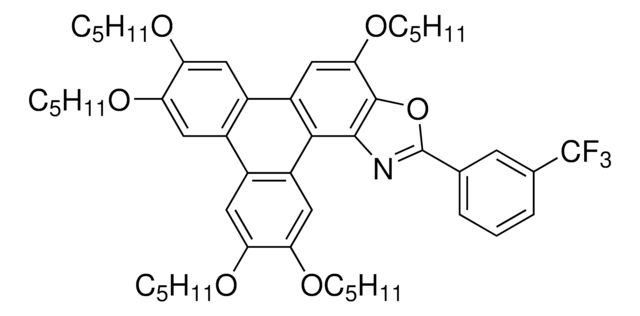922927
TpOx-Ph
Sinónimos:
2,3,6,11,12-Pentakis(pentyloxy)-8-phenyltriphenyleno[1,2-d]oxazole
Iniciar sesiónpara Ver la Fijación de precios por contrato y de la organización
About This Item
Fórmula empírica (notación de Hill):
C50H65NO6
Número de CAS:
Peso molecular:
776.05
NACRES:
NA.23
Productos recomendados
temp. de almacenamiento
−20°C
Nivel de calidad
Categorías relacionadas
Descripción general
TpOx-Ph is a UV excitable fluorescent material with a polycyclic aromatic donor-acceptor structure where the triphenoxazole core acts as a donor and the aromatic group on the two position of the oxazole (phenyl) act as the acceptor group. The push-pull, donor-acceptor, structure facilitates intramolecular charge transfer in the excited state that results in a 197 nm emission Stokes Shift. This oxazole is also a photo-conducting Discotic Liquid Crystalline (DLC) material with mesophase transition onset temperature of 111 °C. It is designed for 355 nm and 405 nm excitation with emission at 467 nm with quantum yield of 0.49, high thermal, chemical and photostability. This luminescent compound has potential uses in fluorescent dye staining, organic electronic and photonics, and imaging applications.
Aplicación
Fluorescent materials have a range of unique properties that allows for potential use in a range of applications:
- Fluorescent dye staining
- Organic semiconductor for organic electronic and photonic applications
- Multi-photon microscopy
Almacenamiento y estabilidad
Store under nitrogen in the dark in the freezer (below 8 Celsius).
Código de clase de almacenamiento
11 - Combustible Solids
Clase de riesgo para el agua (WGK)
WGK 3
Punto de inflamabilidad (°F)
Not applicable
Punto de inflamabilidad (°C)
Not applicable
Elija entre una de las versiones más recientes:
Certificados de análisis (COA)
Lot/Batch Number
Lo sentimos, en este momento no disponemos de COAs para este producto en línea.
Si necesita más asistencia, póngase en contacto con Atención al cliente
¿Ya tiene este producto?
Encuentre la documentación para los productos que ha comprado recientemente en la Biblioteca de documentos.
Nuestro equipo de científicos tiene experiencia en todas las áreas de investigación: Ciencias de la vida, Ciencia de los materiales, Síntesis química, Cromatografía, Analítica y muchas otras.
Póngase en contacto con el Servicio técnico








